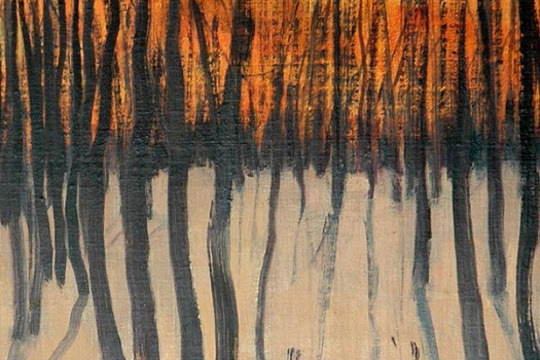Showing 3 items matching "Liza Dale‐Hallett"
-
 Lauren McAlary
Lauren McAlaryCollecting Fire: A new kind of practice
... Liza Dale‐Hallett... collecting response to the Black Saturday bushfires is inspired by Liza Dale‐Hallett, Rebecca Carland and Peg Fraser’s reflections on the Victorian Bushfires Collection project, in 'Sites of Trauma: Contemporary Collecting and Natural Disaster'. ...The fires of February 2009 left an indelible mark on the histories of Victoria’s community collecting organisations; whether through blackened ash markings or by the absence of once cherished objects and ephemera.
This exploration of Victoria’s collecting response to the Black Saturday bushfires is inspired by Liza Dale‐Hallett, Rebecca Carland and Peg Fraser’s reflections on the Victorian Bushfires Collection project, in 'Sites of Trauma: Contemporary Collecting and Natural Disaster'.
-
 Jary Nemo and Lucinda Horrocks
Jary Nemo and Lucinda HorrocksCollections & Climate Change
... notes by: Liza Dale-Hallett, Senior Curator Sustainable Futures, Museums Victoria, Rebecca Carland, Senior Curator, History of Collections & Scientific Art, Museums Victoria and Lucinda Horrocks, Wind & Sky Productions. ...The world is changing. Change is a natural part of the Earth’s cycle and of the things that live on it, but what we are seeing now is both like and unlike the shifts we have seen before.
Anthropogenic change, meaning change created by humans, is having an impact on a global scale. In particular, human activity has altered the composition of the Earth’s atmosphere, causing the world’s climate to change.
Already in the state of Victoria we are seeing evidence of this change around us. In the natural world, coastal waters are warming and bringing tropical marine species to our bays. Desert animals are migrating to Victoria. Alpine winters are changing, potentially putting plants and animals at risk of starvation and pushing species closer to the margins. In the world of humans, island and coastal dwellers deal with the tangible and intangible impacts of loss as sea levels rise, bush dwellers live with an increased risk of life-threatening fires, farmers cope with the new normal of longer droughts, and we all face extreme weather events and the impacts of social and economic change.
This Collections and Climate Change digital story explores how Victoria’s scientific and cultural collections help us understand climate change. It focuses on three Victorian institutions - Museums Victoria, the Royal Botanic Gardens Victoria and Parks Victoria. It looks at how the information gathered and maintained by a dedicated community of researchers, curators, scientists, specialists and volunteers can help us understand and prepare for a hotter, drier, more inundated world.
The story is made up of a short documentary film and twenty-one examples highlighting how botanical records, geological and biological specimens and living flora and fauna provide a crucial resource for scientists striving to map continuity, variability and change in the natural world. And it helps us rethink the significance of some of Victoria’s cultural collections in the face of a changing climate.
-
 Liza Dale-Hallett
Liza Dale-HallettStories of Women on the Land
From the grinding stones of Australia’s first farmers, Wagga quilts, butter pats and recipe books to family photographs, garden tools and agricultural equipment – women’s farm work is frequently found in museums. The contribution of women to Australian agriculture has a rich and very deep history. Yet these stories have been unacknowledged and continue to be undervalued.
The nature of women’s farm work is often rendered invisible because much of it is intangible and ephemeral, is characterised by relationships and oral tradition, and dismissed as just ‘domestic’ work when in fact this work is what has often sustained families, farms and communities. The layers of invisibility are even deeper for migrant and Indigenous women.
There has also been a long history of official barriers to recognising women’s work on the land. Farm women were deliberately omitted from the 1891 Victorian Census. Women were excluded from agriculture courses up into the early 1970s. It wasn’t until 1994 that women were legally recognised as farmers, prior to this they were defined as ‘non-productive "sleeping" partners’. And, It is only in recent years that scholars have finally acknowledged the 40-50,000 years of Indigenous knowledge and practice in complex systems of agriculture and aquaculture.
Victorian museums are a treasure trove of untold stories about the extraordinary lives of farm women and how they have shaped our land and rural communities.
